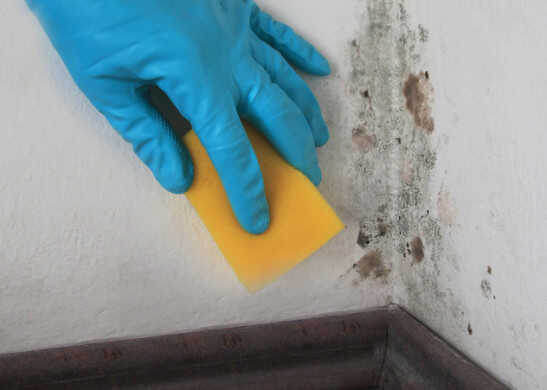
Mold can be a very serious and recurring problem both in homes and in factories and artisanal production environments. Below are some guidelines for efficient products and methods for cleaning surfaces contaminated with fungi.
- Bleach: Mix 50 ml of bleach in 950 ml of water. Spray with a spray or rub with a cloth or loofah on the area where the mold is. No need to rinse.
- Borax or sodium borate: Mix 50g of borax with 950ml of water. Apply to the area and rub with a sponge or brush. Dry the region after application.
- Vinegar: Apply pure vinegar, that is, without being dissolved in water. Use a spray, cloth or loofah.
- Ammonia: This option is recommended to eliminate mold from smooth surfaces, without porosity. Mix equal parts of ammonia and water, apply to the area where the mold is, wait 10 minutes and clean the area using plain water. important note: Never combine ammonia with bleach as together they produce chloramine gas (NH2Cl), which is highly toxic.
- Hydrogen Peroxide or Hydrogen Peroxide: Spray the hydrogen peroxide on the mold and wait 10 minutes. Clean the area without applying water.
- Sodium bicarbonate: Mix half a teaspoon of baking soda with 1 liter of water and rub the contaminated area. Rinse and clean. It is particularly efficient on fabrics.
- Tea Tree Oil: antifungal oil, use 1 teaspoon mixed in 200ml of water. Spray on the contaminated surface, leave for a few minutes and wipe with a cloth.
When cleaning moldy areas, wear rubber gloves, goggles and masks to avoid inhaling the spores or toxins. Make sure you are not allergic to the products used for cleaning.
How to prevent mold growth
Controlling humidity inside environments is essential to control the spread of mold. Check plumbing and possible leaks in affected areas. Ventilation is also recommended in closed environments where water cleaning is carried out, such as factory installations and maturation chambers.
Sources:
https://www.epa.gov/mold/mold-remediation-schools-and-commercial-buildings-guide
http://isct.com/do-it-yourself-mold-removal/




Putz!
You post a tutorial on how to remove mold from walls on a delicatessen website and it doesn't take long for 7m of crazy people to appear cleaning salami with ammonia and caustic soda. Speaks seriously.
Good evening... I'm trying to sell dry sausage?.. But after a while it starts to smell... Is there any preventive process
You can apply a fungal culture to colonize and inhibit the proliferation of other unwanted fungi. Other possibilities are to clean the sausages whenever something appears, which is a little difficult when working with volume, or use a fungicide, such as natamicide.
Good afternoon…. Taking advantage of the answer, how can you clean these fungi? Any specific solution or just a damp cloth?
Hi Bruno, if you want a definitive solution, read this post: https://charcutaria.org/aditivos-alimentares/como-eliminar-o-mofo-na-charcutaria
If you want to remove it whenever a spot of mold appears, rub it with a cloth dampened in water, salt and vinegar. 200ml of water, 10g of salt and 1 tablespoon of vinegar.
To remove mold from meat, do I remove it with vinegar or brine? And if brine is better, how do I make it?
Sarah, rub a cloth soaked in brine (20g salt/200ml water) to remove unwanted contamination. Dry well and return for maturation. If you have a starter culture (or yakult), spray it on the products to protect it from unwanted microorganisms. Additionally, you can add a tablespoon of vinegar to this brine.